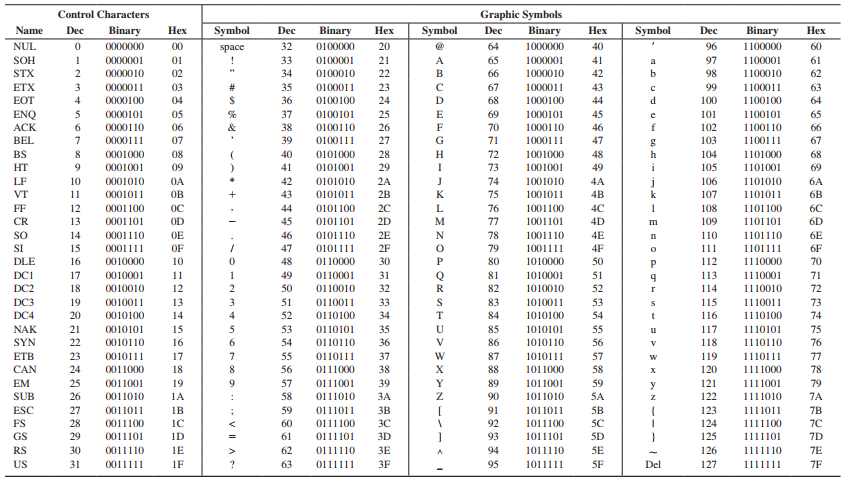ASCII codes are alphanumeric codes that represent numbers, alphabets, symbols and special characters in computers. ASCII stands for American Standard Code for Information Interchange. Whenever we press a key from the keyboard, the corresponding ASCII code goes into the computer. ASCII has 128 characters that can be represented using 7 bits (00 to 7F in hexadecimal). The first 32 ASCII characters are nongraphic commands that are not displayed but are control sequences such as “null”, “escape”, etc. The remaining characters are graphic symbols that can be displayed, such as letters and numbers etc. The following table shows the list of all ASCII characters along with their code. The table is collected from the book that is mentioned in the Reference section.
Extended ASCII Characters
Other than the 128 standard ASCII characters, IBM adopted an additional 128 characters for use in their PCs. Because of the popularity of IBM PCs, these extended ASCII characters are also considered standard. The extended ASCII characters are represented using eight binary bits, starting from 80H to FFH. These extended ASCII characters include non-English alphabets, foreign currency symbols, Greek letters etc.
Reference: Floyd, Thomas L. Digital Fundamentals. Pearson Education India.
Previous Table of Content Next
